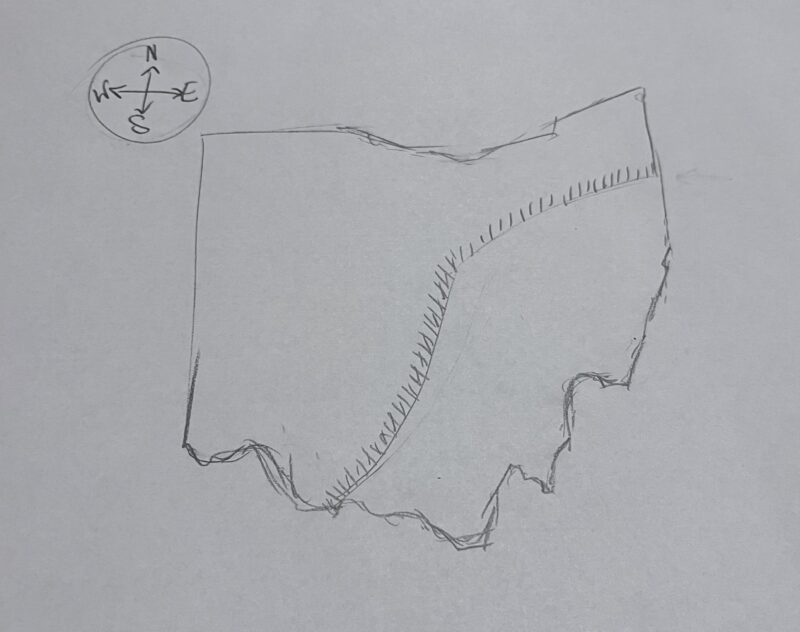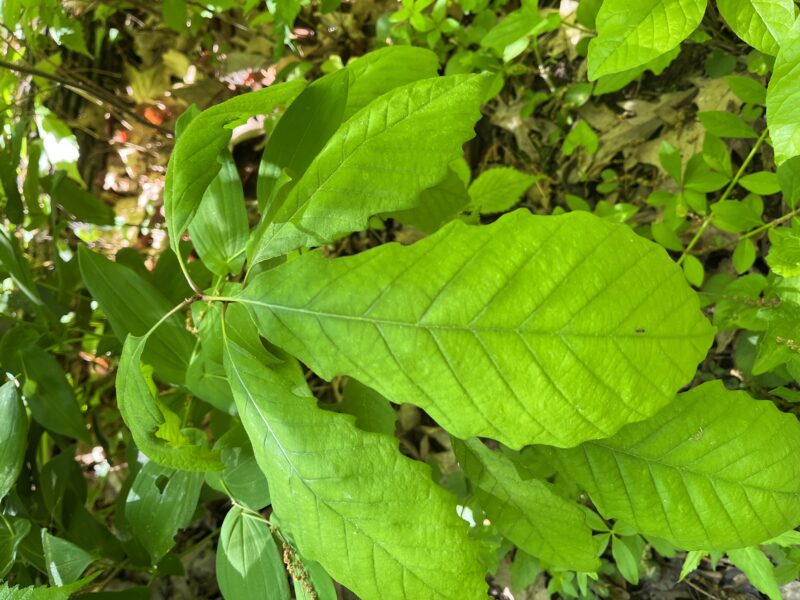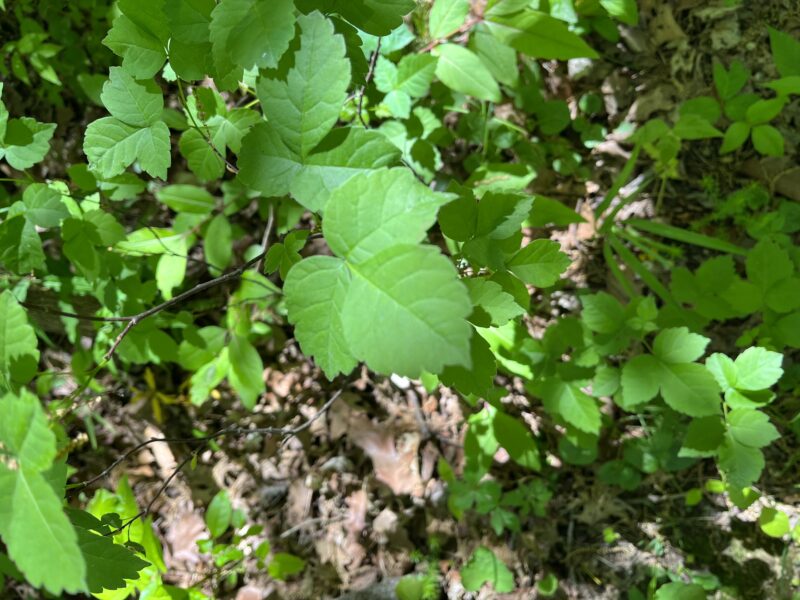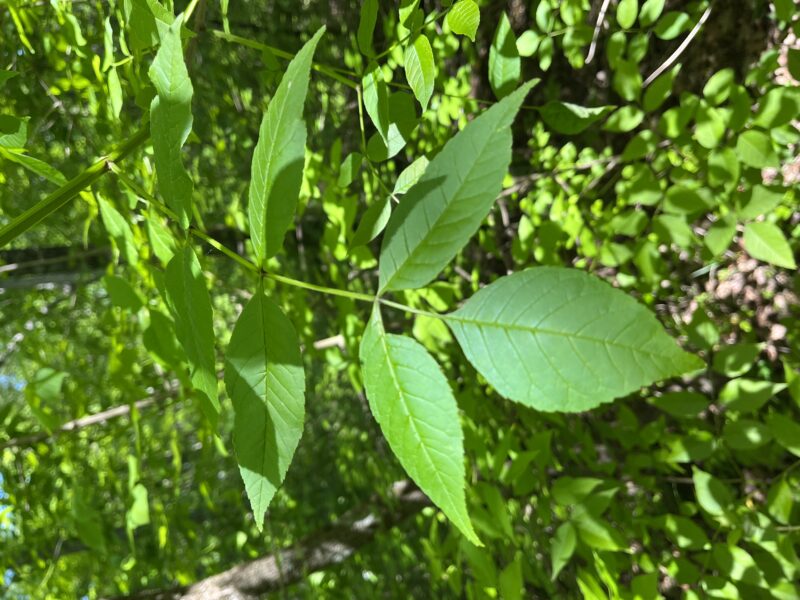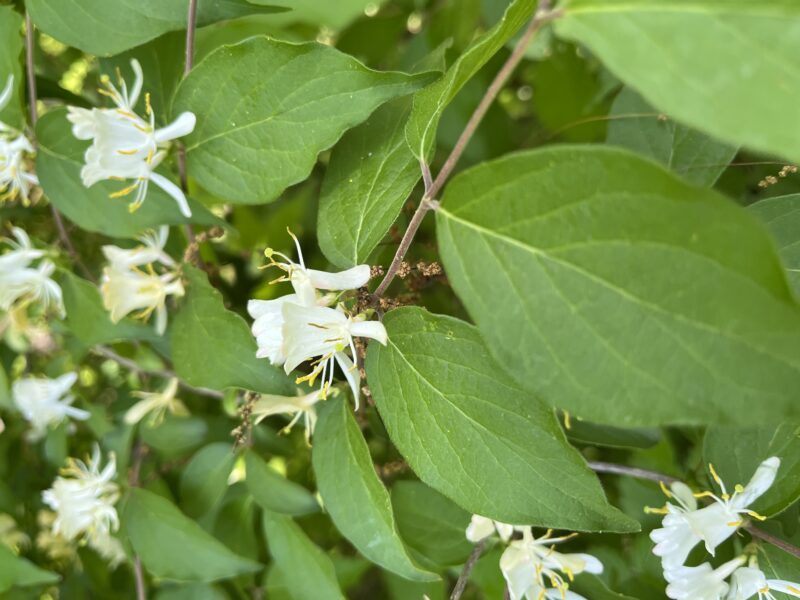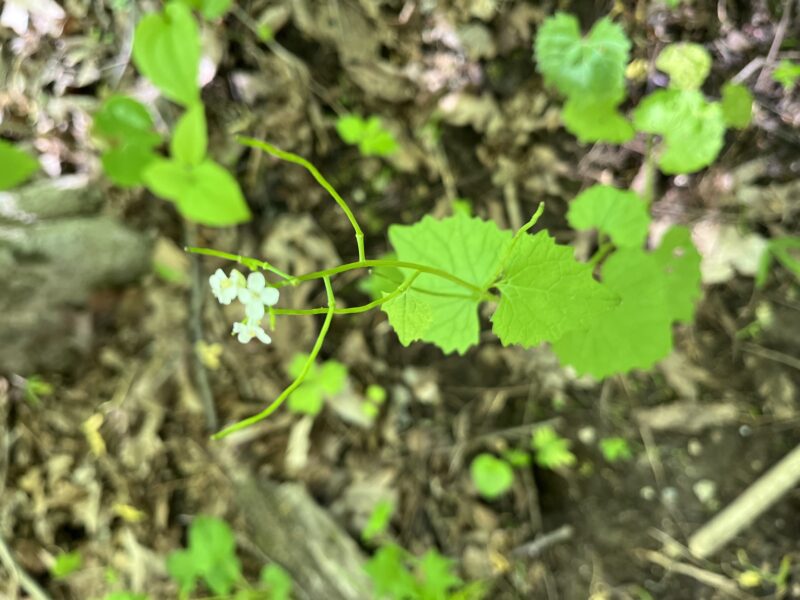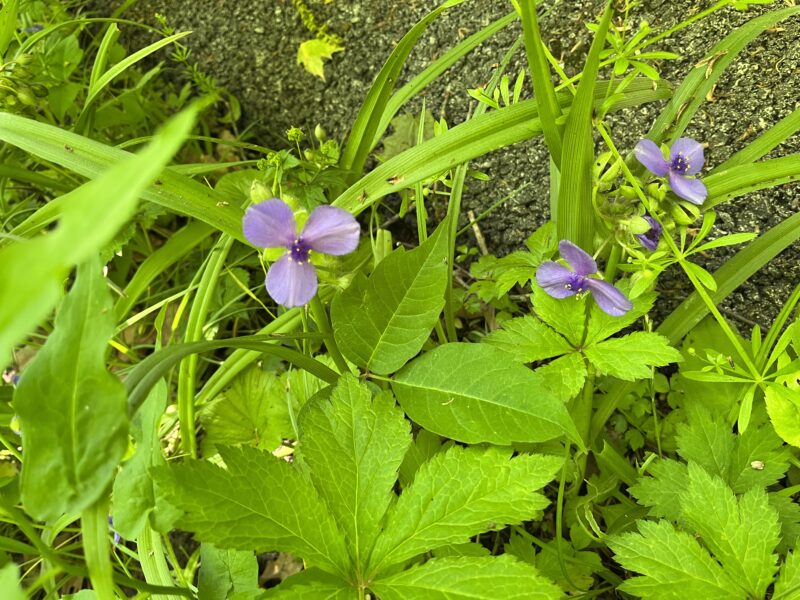On Wednesday, May 17th, our class visited Batelle Darby Metro Park and walked along some trails to identify species mentioned in Jane Forsyth’s article about Geobotany along with some others including invasive species and our own specific assignments. My assignment was to find and identify 2 monocots from Batelle Darby Metro Park along with 2 invasive plants, and 4 Calciphiles. As Jane Forsyth discusses in her article, this region contains many Calciphiles due to the limestone abundantly present in the ground. The Batelle Darby Metro Park is in this western region, causing it to consist of limestone foundations and thus many Calciphiles.
Ohio’s geography can be divided into two, the western and eastern regions. The western region is mostly flat and has more limestone closer to the surface, causing more impermeable soil with poor water drainage. The soil in this area is very high in lime concentration and not very deep in comparison to other regions. This is representative of the natural layers of rock in Ohio. The eastern areas of Ohio are more acidic and have more hilly sandstone foundations in the soil. Higher shale and sandstone concentrations can be linked to the different ecosystems and therefore plant diversity in the eastern regions of Ohio.
The differences in these regions are due to river movements and erosion. Originally, there was a different sequence of sedimentary rock strata. The three original layers from top to bottom were sandstone, shale, and limestone at the bottom. The Teays River is the preglacial river that caused the changes to Ohio’s western region primarily. The river flowed for probably around 200 million years to cause all the erosion seen now. The only curtailing force that affected the force of the Teays River was the glaciers of the Ice Age. The glaciers were curved in Ohio due to the sandstone hills found in the eastern regions of Ohio, the glaciers were greatly slowed. However, the western region was lacking the sandstone hills from the Teays River’s erosion, causing the glaciers to go unhindered.
Glacial tills were produced by this specific movement of the glacier. A till is a boulder-like deposit of what was being carried by the glacier while moving across the land. It is a remnant of the glacier’s previous locations. Both the eastern and western sides of Ohio have unique tills in their regions. The western region contains lime and clay-filled tills while the eastern region has notably less lime and clay and more gravel deposits.
The substrates in western Ohio have high concentrations of lime and clay, very pore drainage, not very well-aerated soil, and abundantly nutrient soil for plants. These conditions of limey substrates support trees and shrubs such as redbud (Cercis canadensis), red-cedar (Juniperus virginiana), fragrant sumac (Rhus aromatica), hackberry (Celtis occidentalis), and blue ash (Fraximus quadrangulata). In environments that are specifically high-lime and high-clay, sugar maple (Acer saccharum), beech (Fagus grandifolia), red oak (Quercus borealis), shagbark hickory (Carya ovata), and white oak (Quercus alba) are more supported.
Substrates in eastern Ohio have a sandstone surface that exposes bedrock, this causes soil that does not soak in water very well, and contains low nutrients, in an overall acidic environment. In contrast to the western side of Ohio, these conditions favor trees and shrubs such as chestnut oak (Quercus montana), sourwood (Oxydendrum arboreum), scrub pine (Pinus virginiana), pitch pine (Pinus rigida), and hemlock (Tsuga canadensis).
A major determinant in the distribution of species like sweet buckeye, hemlock, and rhododendron is how the glacier movements and the Teays River impacted the surrounding regions and deposits in the area. The geography in the area deeply impacts the locations and distributions of these plants. For the sweet buckeye, the distribution lies within the southeastern region of Ohio below the line of the glacier movements. In contrast, hemlock, while also lying in the eastern region of Ohio, is also present in northeastern regions above the line of glacier movements. Different from both sweet buckeye and hemlock, rhododendrons’ known locations are in direct correlation with the Teays River’s valleys. This suggests rhododendrons’ origins are way farther north and arrived in Ohio from the flow of the Teays River.
Hackberry (Calciphile)
The image below depicts the first Calciphile, hackberry (Celtis occidentalis). A very early use for hackberry was simply eating the fruits it produces. Hackberry produces many small fruits that are high in fat, carbohydrates, proteins, and vitamins, making it a great food resource in early civilizations.
Chinquapin Oak (Calciphile)
Chinquapin oak (Quercus muehlenbergii) is another Calciphile identified on our trip. While many oaks are known for their sturdy and hard lumber, chinquapin oaks, in particular, were used for fueling steamships that sailed along the Ohio River!
Fragrant Sumac (Calciphile)
The fragrant sumac (Rhus aromatica) is the third Calciphile identified, as the name suggests, this sumac is very fragrant! This sumac naturally produces large amounts of tannin, a very useful chemical in many dyes and even in photography dyes. The high tannin contents in fragrant sumac made it a useful plant for Native Americans, the tannin was extracted and used for leather tanning.
Blue Ash (Calciphile)
The Blue Ash (Fraximus quadrangulata) is the fourth and final Calciphile identified. Blue Ash’s name originates from the historical use of the tree’s bark, black dye extraction! (So maybe it should be called black ash? Were they color blind too? Are all botanists color-blind? Maybe that’s why there are so many strange common names…) The dyes from these trees were commonly used on yarns for further use. The wood of this ash is notably darker than other ashes such as white ash (okay now the name is starting to make sense… but it’s still not blue!).
Honeysuckle (Invasive)
Honeysuckle (Lonicera tatarica)is one of the nastiest invasive plants that inhabit Ohio (well I guess the flowers are kind of cute… and tasty… okay but it’s still nasty.), it overtakes native plants and prevents their growth. This variety of honeysuckle is native to East Asia and has spread rapidly since its introduction to the United States. While not entirely durable, this plant will spread just about anywhere, giving it an advantage compared to native plants.
Honey Mustard (Invasive)
Honey Mustard (Brassica juncea) is another invasive species but this species comes from the mustard family, Brassicaceae. Many mustards from this family are considered invasive. This mustard in particular can be easily pulled from the ground with a simple tug and can be used in many dishes. Sounds like a fun way to create an invasive-plant-based salad!
Large-flowered trillium (Monocot)
The large-flowered trillium (Trillium grandiflorum) was an interesting find on our hike. This flower is normally white which made it more difficult for me to identify, but since it was the end of its bloom it was starting to fade to pink! Native Americans supposedly used the roots of trillium flowers as medicine to aid in childbirth.
Purple Ohio Spiderwort (Monocot)
The purple Ohio spiderwort (Tradescantia ohiensis) found along many trails we walked that day was a great example of a common monocot that is currently in bloom. What makes spiderwort so interesting in comparison to some other plants found in Ohio is its sensitivity to radiation. Blue hairs on stamens will turn pink in response to radiation damage. The accumulation of pink hairs is much faster and simpler than many other low radiation detection methods currently available.

